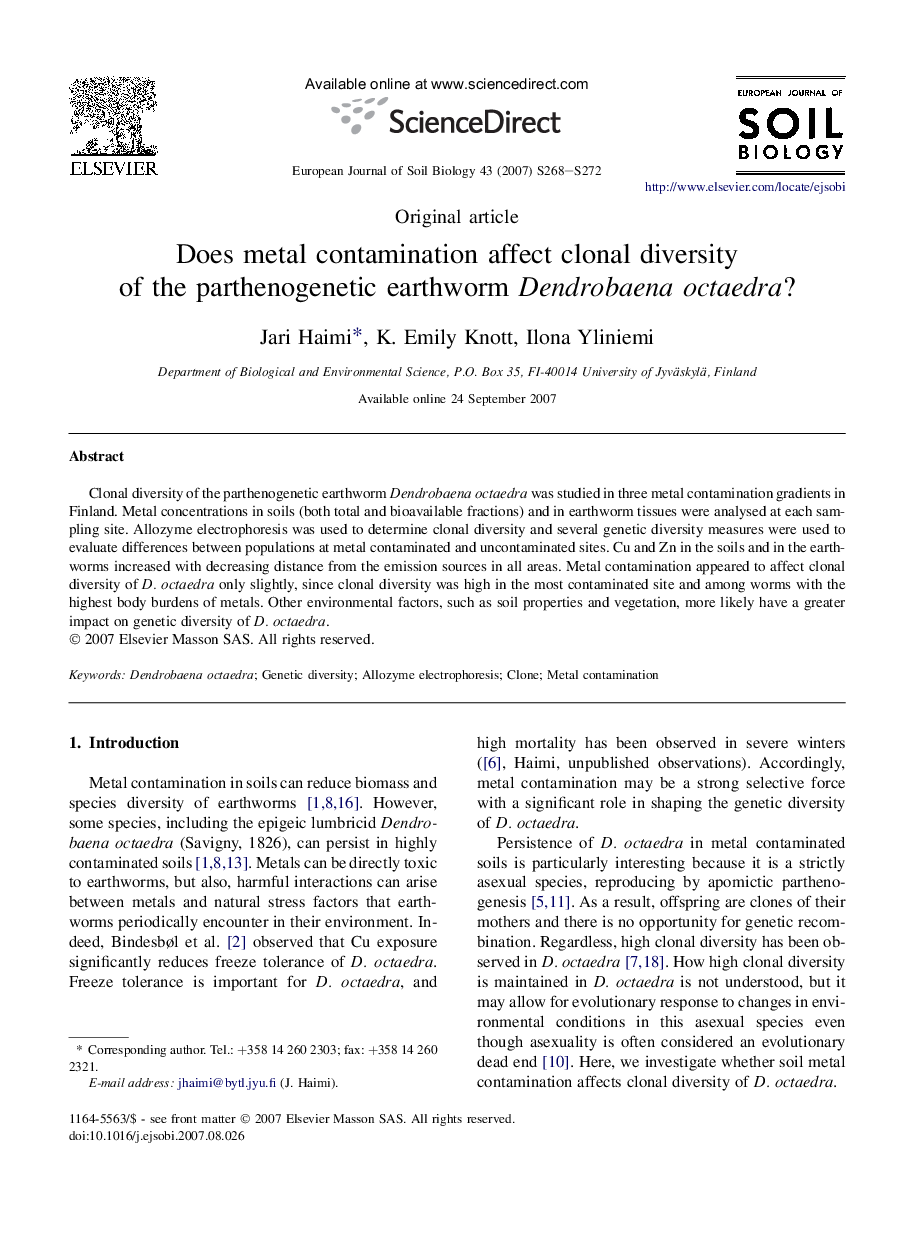| Article ID | Journal | Published Year | Pages | File Type |
|---|---|---|---|---|
| 4392480 | European Journal of Soil Biology | 2007 | 5 Pages |
Clonal diversity of the parthenogenetic earthworm Dendrobaena octaedra was studied in three metal contamination gradients in Finland. Metal concentrations in soils (both total and bioavailable fractions) and in earthworm tissues were analysed at each sampling site. Allozyme electrophoresis was used to determine clonal diversity and several genetic diversity measures were used to evaluate differences between populations at metal contaminated and uncontaminated sites. Cu and Zn in the soils and in the earthworms increased with decreasing distance from the emission sources in all areas. Metal contamination appeared to affect clonal diversity of D. octaedra only slightly, since clonal diversity was high in the most contaminated site and among worms with the highest body burdens of metals. Other environmental factors, such as soil properties and vegetation, more likely have a greater impact on genetic diversity of D. octaedra.
